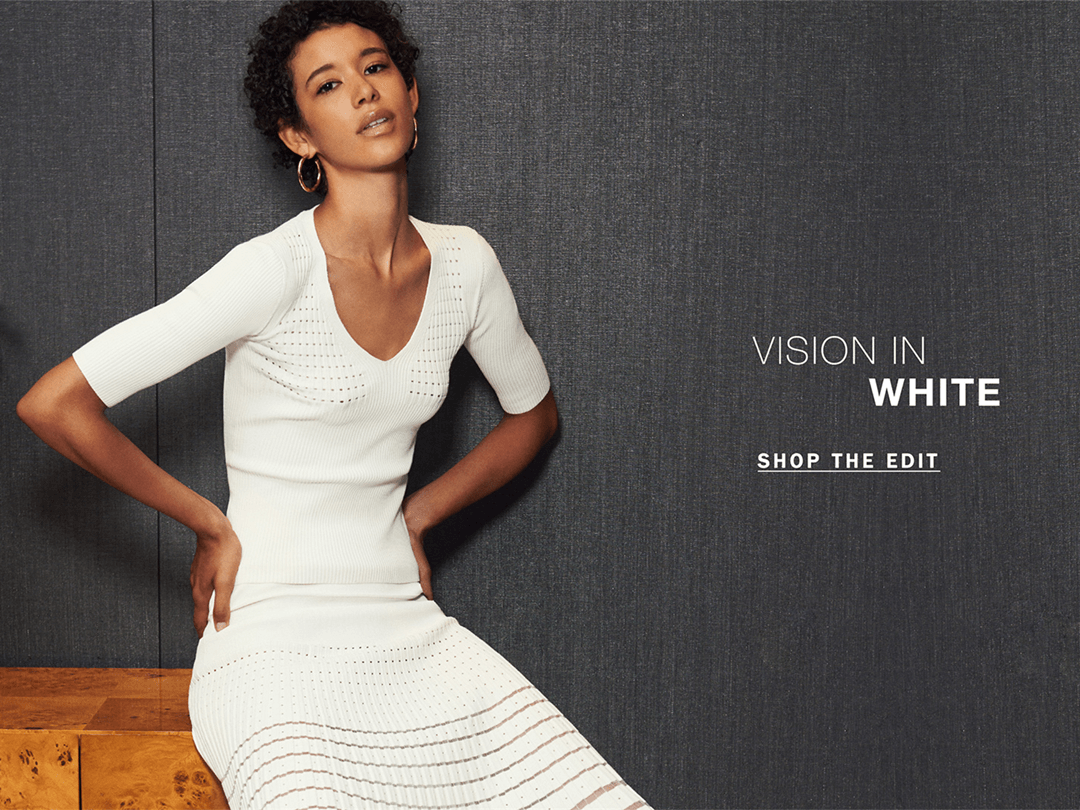HISTORY OF THE HERVE LEGER
In The Pantheon Of Famous Dresses, You'd Have The Lbd, The Wedding Gown, The Wrapdress, And, Residing At The Absolute Sexiest End Of The Hall, The Herve Leger Dresses. The Figure-Hugging Style Basically Ushered In The Term "Body-Con" And Has Had a Sexiest Who's-Who List Wearing It Since The First Style Was Introduced By Designer Herve L. Leroux In The Early 90s. If You'Re Thinking About Another Designer Named Herve, Hold Please: Leroux And Leger Are One And The Same. The Original Bandage Dress Creator Was Christened Herve Peugnet, But The Name Was Deemed Clunky By Karl Lagerfeld After The Young Designer Went To Work For Him At Fendi. He Adopted Leger At Lagerfeld's Suggestion And Kept It When He Went On To Start His Own Label. When Max Azria Acquired The Brand In The Late '90s, Leger Took Up The Surname Leroux For The New Label He Started In 2000.

But Back To Pre-Azria Bandage Dresses. A New York Times Runway Review, Published In 1993, Calls Leger's Speciality "Elastic Strips Of Fabric Sewn Together To Make Girdle-Tight Dresses." The Piece Also Reveals That His Brand Received Financing From The Bronfmans, The Powerhouse Family Who Made Their Fortune Via Seagrams And Counts Dj/All-Around Cool Girl Hannah Bronfman As The New Generation.
The Original Runway Pieces From Leger Share Similar Dna With What You See Produced Presently, Though The Bandage Style Was Mixed In With Less Body-Con Pieces, Including The Midi Skirts Worn On The Runway By Karen Mulder, Cindy Crawford, And Eva Herzigova In The Fall Of 1995.
Along With Being One Of The Models Sporting The Design On The Runway, Crawford Also Repped The Bandage Dress For Events Off The Runway. For a Vogue Anniversary Party In 1998, She Did The Lbd Version.
The Fact That The Brand Wasn't Originally Known Exclusively For Bandage Dresses Was Something Understood By Max Azria And Co. When The Company Acquired The Name In 1998. "When Leger Was Designing, He Only Used One Size Of Bandage. When You Look At The Archive, There's a Lot Of Woven, He Did Suiting, He Did Gowns," Lubov Azria, Chief Creative Officer Of Bcbg Max Azria Group, Told Glamour. "Bandage Was Only a Small Part Of It, But It Was What Got The Most Attention So We Realized That's The Essence Of Herve."
The Company Worked With Leger Himself For About a Year Before Looking For New Designers. When No One Quite Right For The Job Was Found, It Moved In-House, Staying Dormant For About Five Years While The Team Worked To Understand What Was Behind The Magical Bandage Look.
"I Didn't Want To Launch Until I Truly Understood The Whole Idea. A Bandage Dress Isn't a Woven, It's All Knitted On a Knitting Machine And Is a Completely Different Concept," Azria Explained. "People Assume It's Cut-And-Sew, But There's No Cutting. It's Knitted In a Panel And Then Attached. To Understand The Process And Technical Aside Took a While, And We Wanted To Make Sure It Would Be Unique In The Market."

Those Archives She Mentioned Have Been Somewhat Of a Labor Of Love, With The Company Chief Digging Deep To Stock The Racks; The Back Catalog That Came With The Brand Wasn't The Crème De La Crème, With The Best Items Having Disappeared Beforehand.
"The Pieces That Were Truly Iconic Were Given Away Or Taken By Someone, So I Had To Buy Them Back From Ebay And Private Parties," Lubov Revealed To Us. "We Actually Printed Out Every Runway Show He Did And Matched The Pieces That We Had In Our Vintage Library And Figured Out What Was Missing. We Went On Ebay And Found Some Of Them, They Were Like 400 Euros, And We'd Go To The Collectors, Like Resurrection. Those Were Like $1,400, But Sometimes We'd Bargain Or Do Trades. Then I Found Somebody In Paris Who Was The Muse Of Herve Leger Bandage Dress. She Had Tons Of Them And Was Willing To Part With Them—She Was In Her 70s."
